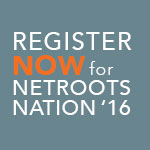After a great run, the Winning the Internet blog has been retired. However, you can still keep in touch with New Media Mentors here.
 It wasn’t long ago that Facebook was the new frontier for nonprofits. As Facebook’s user base grew exponentially nonprofits rolled up their sleeves and went to work building communities on the platform. It was a new and exciting way to engage with supporters. It was an opportunity to go beyond the one-way style communication everyone was used to with email, and build a real relationship with the people backing our causes. It was the future. Or so we thought.
It wasn’t long ago that Facebook was the new frontier for nonprofits. As Facebook’s user base grew exponentially nonprofits rolled up their sleeves and went to work building communities on the platform. It was a new and exciting way to engage with supporters. It was an opportunity to go beyond the one-way style communication everyone was used to with email, and build a real relationship with the people backing our causes. It was the future. Or so we thought.
Over the last several months and even years Facebook has been tinkering with its algorithm, making it harder and harder for nonprofits to reach the communities they built on the platform without paying. It has felt unfair. Our time and effort helped build up their platform. Plus we’re nonprofits – we’re broke!
It’s been frustrating, but we’ve persevered. We’ve seen our posts reach only a tiny fraction of our audiences, and we’ve tried to correct for this by learning about the algorithm and shaping our content accordingly. This has often been a big burden on overworked staffs that don’t necessarily have time to design images and develop videos. Even so, we’ve continued to try it, in pursuit of this relationship we want so badly with our supporters. We just haven’t wanted to give up on the communities we built on Facebook.
This week Forrester Research published a blog post and report on this topic, declaring that in January of 2015 Facebook will finally kill organic reach. In other words, folks will only see promotional content if it’s paid for. If your organization can afford paid advertising or is in a position to start fundraising for it, this might work for you. For nonprofits that don’t have the money for paid advertising, this could very well be the final blow. Only time will tell.
The Forrester post suggested that brands move away from using Facebook and invest in building communities within their websites. This is a very 2007/2008 concept (remember when everyone had—or at least wanted—their own social network on their site?). It also suggested focusing more attention on email. For nonprofits, I agree with the second recommendation 100%. We all know we get the most bang for the buck from email, so doing email well is essential. It’s important not to overlook email because it’s old hat.
As for building branded social networks and communities – I think that really depends on your organization’s mission, relationship with supporters and budget. Branded social networks can be expensive to build and a ton of work to maintain. For many nonprofits building a branded network just doesn’t make sense.
It could be hard to let go of the relationship dream, but at some point we just might have to accept that and keep pushing forward with what does work. In addition to thinking about email and social alternatives, we can still optimize content on our websites for sharing and run paid ads on Facebook when we have the cash. It’s not quite what we dreamed of, but it’s something,




Comments are closed.